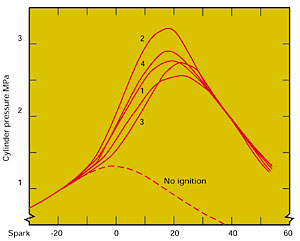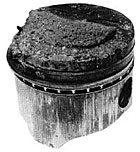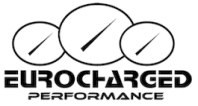Results 1 to 15 of 15
-
08-17-2010, 08:07 PM #1
 Timeout
Timeout


- Join Date
- Feb 2010
- Location
- NJ
- Posts
- 13,412
- Rep Points
- 58.0
- Mentioned
- 318 Post(s)
- Rep Power
- 0
Advance Ignition Timing: What Happens ?
http://www.team-integra.net/sections...?ArticleID=235Advancing the spark timing means you start the combustion event earlier. The event (in this case, an explosion) is started earlier and finishes earlier.
A. ADVANCING AND CYLINDER PRESSURE
You have to know about cylinder pressure and how cylinder pressures change or behave during the compression and power strokes of a 4 stroke engine.
The way to locate the exact position of a piston along it's travels up and down the cylinder is by using the crankshaft degrees, as a reference point:
When the piston is at the very top (top dead center, TDC), it's at 0 crankshaft degrees. When it has traveled down and reached the very bottom , it has gone 180 degrees. When it reaches the top again, it has traveled 360 crankshaft degrees. That was 1 complete revolution of the crankshaft.
Here is a graph showing you what the pressure (Y-axis) is inside a cylinder and how that pressure behaves, as your crankshaft turns and the piston is going up and down, during the compression stroke and power stroke.

This pic shows what happens during 5 combustion strokes in a row (5 solid lines) inside the same cylinder.
The X-axis on the bottom is crankshaft degrees where zero degrees = TDC (when the piston is at the very top of it's travel and finished squeezing or compressing the air-fuel mix on the compression stroke).
Any crank degree to the left of zero (negative number) is when the piston is still squeezing the air-fuel mix on the compression stroke. This is called Before TDC or BTDC. So at -20 degrees BTDC means the piston is squeezing and pushing up. By -10 degrees BTDC, as we move to the right on the graph's X-axis, the piston has squeezed some more and is higher up in terms of it's position and it's nearing the top of it's travel.
Any crank degree to the right of zero (positive number) is the power stroke. This is called After TDC or ATDC. The piston is now being pushed back down by the combustion explosion and turning the crank. So at +10 degrees, the piston has dropped down. By +20 degrees , as we move rightward along the X-axis, the piston has gone down even more, away from the very top (TDC) and has turned the crank further.
The dotted line on the very bottom shows you what the cylinder pressure would be if we did NOT light (ignite) the air-fuel mix with a spark. This is what you measure when you do a compression test. It's also called the "cranking pressure".
Also notice that when you add a spark and cause an explosion (the 5 solid lines), the cylinder pressures shoot up way higher than compared to when the piston just squeezes the air-fuel mix with no spark (the dotted line).
In this example, the spark was lit at -30 crank degrees to the very far left of the X-axis and we proceed to the right along the X-axis. Notice that the cylinder pressure does not immediately rise after we have a spark at -30 crank degrees. The centrally-located sparkplug sends a spark that must travel out a distance equal to 1/2 of the bore and down towards the rising piston top.
The air-fuel mix is lit, in a cascade, like dominoes falling in a row, inside the cylinder. The spark flame must travel out first and light as many air-fuel molecules as it can.
Then the explosion occurs. This is when you see the cylinder pressure start to rise sharply at a value greater than the dotted line. This is the start of the explosion. A combustion event is an expanding thing and occurs over a specific timespan. The exploding force expands outwards from the spark plug . Notice that the cylinder pressure rises and rises as the explosion proceeds until it reaches it's highest pressure. When the cylinder pressure reaches it's peak value, the explosion is finished. The burning of the air and fuel is done.
. Notice that the cylinder pressure rises and rises as the explosion proceeds until it reaches it's highest pressure. When the cylinder pressure reaches it's peak value, the explosion is finished. The burning of the air and fuel is done.
We all know that the explosion is what pushes down on top of the piston and turns the crank. The peak cylinder pressure is the highest force or push down on top of the piston to make it turn.
The important thing is WHEN does the explosion START and FINISH.:
ADVANCING OR RETARDING ignition timing determines when the explosion force begins and finishes and determines WHEN THE CYLINDER PRESSURE BEGINS TO START RISING AND WHEN IT FINISHES.
ADVANCING AND RETARDING TIMING ALSO DETERMINES THE HIGHEST VALUE FOR YOUR PEAK CYLINDER PRESSURE.
Please look at the graph again. Originally in this example, we started the spark at -30 crankshaft degrees. What would happen if we made the spark happen at -34 crankshaft degrees (ADVANCE THE TIMING)?
The timespan or "window" for the start of the cylinder pressure to rise and finish at it's peak would shift to the left along the X-axis by 4 crankshaft degrees. Everything would start earlier and finish earlier by 4 degrees.
B. WHY DO WE ADVANCE THE SPARK TIMING ? : TO MAKE MORE POWER (UP TO A POINT)
Remember, any crank degree to the LEFT of zero on the graph means the piston is rising and squeezing on the compression stroke.
The explosion is an expanding force going in the opposite direction to what the piston is going. The explosion or burn is pushing down. The piston is coming up (squeezing the mix).
Therefore, more of the explosion time (window) occurs while the piston is still squeezing. You are asking the piston to work twice as hard. It has to squeeze AND overcome the force pushing down on it from the expanding explosion force.
Therefore, when you advance the spark timing, the cylinder pressures shoot up even higher than before.
The point when the peak cylinder pressure occurs is now shifted to the left or earlier when you advance. The maximum push down on top of the piston occurs at a connecting rod to crankshaft angle that is not helpful to turning the crank.
What do I mean by that?:
here is a cartoon of a piston ( [O] ) and a connecting rod ( I ) looking at them from a side view.
What would happen when the maximum push occurs at
A) zero crank degrees or TDC (very top of the piston travel)
compared to
B) later on as the piston starts to drop on the power stroke), say at +15 degrees ?
Piston and Connecting Rod Side View and the Peak Cylinder Pressure is pushing down from above on top of the piston:
A) ............[O]............. B) [O]
.................I.................... /
..Rod @ Zero TDC..........Rod @ + 15 degrees ATDC
You can see in Situation A), if the maximum push or force down on top of the piston occurs at TDC, the push will just send the force straight down the piston and through to the rod, when the rod is "in-line" or vertically up and down to the piston. The maximum downward push or peak cylinder pressure happening here would NOT help turn the crankshaft to make more power. It would just wear out your rods and rod bearings faster.
In Situation B), if we let the piston go past TDC, the rod angle is tilted at an angle. It is not up and down. If you place the maximum downward push or cylinder pressure when the rod is tilted, the crank will turn. The piston is moving to the right and down, clockwise. The peak cylinder pressure occuring here would turn the crank easier at a greater speed and therefore, make more power.
We usually want the peak cylinder pressure to be spread out over several crank degrees (say 10-14 degrees) instead of a short spike over 3-5 crank degrees, because it's easier on the engine wear (especially the bearings) and we want to time this peak cylinder pressure to occur at least +12-15 crank degrees After TDC (ATDC) or later (up to a max of +20-25 crank degrees ATDC, since the rod to crank angle is better and would make more torque).
What happens when we retard the timing?:
If you RETARD ignition timing down from -30 degrees to -26 degrees, you start the combustion event later and finish it later by 4 degrees. The rise in cylinder pressure starts and finishes 4 degrees later. Everything is shifted to the right along the X-axis of our graph.
So with a delayed spark or "retarding", there is less time for the expanding force of the combustion to work against the rising piston (piston has to work less harder) and the peak cylinder pressure occurs at a better rod to crank angle to help turn the crank and make more power (i.e within that ideal +12-25 degree ATDC range).
C. THE DOWNSIDE OF ADVANCING TOO FAR: KABOOM!
When you advance your timing, the peak cylinder pressures rise. In the beginning this generates a bigger push and we see more power from a harder downward push. But as you advance more and more, you increase the peak cylinder pressures so high that 1) the piston must work very hard when squeezing to overcome an earlier and earlier start to the expanding explosion. and 2) the temperatures shoot up sky high as peak pressure inside the cylinder increase more and more as you advance.
Remember very high peak cylinder pressures and temperature are what causes misfiring or worst, detonation.
Piston meltdown with detonation from advancing too far:

So you advance a little and make more power but as you go more and more advance on the timing, you will reach a point when the hp gains come at a cost: the piston, rods, and rod bearings wear out faster because of the added work you ask them to do when you shift the start of the combustion event earlier and you have a higher and higher risk of detonation.
If you go too far on the advance, KABOOM!!!
-
08-17-2010, 08:12 PM #2
-
08-17-2010, 09:27 PM #3
This is very useful and informative. Wonder how many people are actually going to read it.
BRAND NEW IN BOX 991.2 standard/non-pse SPW cat bypass pipe for sale - $899 shipped
New generic 991.2 PSE bypass pipes - $499 shipped
-
08-17-2010, 09:55 PM #4
Everyone and their mother should read it. Basic ignition advance for a 4 cycle ICE.
Some people live long, meaningful lives.
Other people eat shit and die.
I'm not racist, I hate everybody equally; especially fat people.

-
08-17-2010, 09:58 PM #5
 Timeout
Timeout


- Join Date
- Feb 2010
- Location
- NJ
- Posts
- 13,412
- Rep Points
- 58.0
- Mentioned
- 318 Post(s)
- Rep Power
- 0
what changes for the different motors? I was looking for info and this is the best i could find
-
08-25-2010, 09:06 PM #6
 Guest Vendor
Guest Vendor

- Join Date
- Feb 2010
- Location
- OH
- Posts
- 1,454
- Mentioned
- 2 Post(s)
- Rep Power
- 0
Timing is a good guage of the overall inefficiency of an IC engine, the more advance you have to add, the more inefficient the motor in question.
-
08-25-2010, 11:29 PM #7
definitely useful info for those of you who do not understand how timing works. i read it a while a go but just re-read it to refresh. i gave ya rep for it, not like ya need it tho lol. ive never seen 5 btw, nice power mr big man

2007 335i Coupe
Mods: Check the Garage
-
08-26-2010, 11:51 AM #8
 Timeout
Timeout


- Join Date
- Feb 2010
- Location
- NJ
- Posts
- 13,412
- Rep Points
- 58.0
- Mentioned
- 318 Post(s)
- Rep Power
- 0
I guess some people like what i have to say huh

So, will a factory, or even piggy backed ECU/DMW ever advance ignition TOO FAR?
-
08-26-2010, 12:04 PM #9
I really don't think that is possible, and I highly doubt a tuner would build a piggyback that allowed for it.
With my 300zx I can run 20+ degrees ignition timing with 24psi on Q16 by turning the Crank Angle Sensor by hand (well, loosening it and tapping it with a screwdriver), and setting it with a timing light pointed at my crank pulley, but if I forget to turn it back to 15 degrees and run 93 octane, BOOM!
-
08-26-2010, 12:07 PM #10
 Timeout
Timeout


- Join Date
- Feb 2010
- Location
- NJ
- Posts
- 13,412
- Rep Points
- 58.0
- Mentioned
- 318 Post(s)
- Rep Power
- 0
so what would be considered Too Far. I have seen 18+ on mine depending on boost...
-
08-26-2010, 12:13 PM #11
-
08-26-2010, 12:17 PM #12
 Timeout
Timeout


- Join Date
- Feb 2010
- Location
- NJ
- Posts
- 13,412
- Rep Points
- 58.0
- Mentioned
- 318 Post(s)
- Rep Power
- 0
WOT- mid-upper 5k rpms, dont recall off-hand,21psi, 97 oct/meth, iat's were coming back up from 70-80
-
08-26-2010, 12:32 PM #13
I don't want to be giving bad advice, but your IATs are low, you have good octane, you have upgraded turbos that are probably pretty efficient at that PSI, and your ECU is obviously liking it enough to do 18degrees advance, I'd say you are ok.
Did the ignition log show any sharp drops or oscillations?
-
08-26-2010, 12:58 PM #14
 Timeout
Timeout


- Join Date
- Feb 2010
- Location
- NJ
- Posts
- 13,412
- Rep Points
- 58.0
- Mentioned
- 318 Post(s)
- Rep Power
- 0
not through the pulls, but at the shift, which im assuming is normal though
dont worry, im not taking your info as concrete just trying to expand basic knowledge so i can understand whatthe pro's are talking about when they are working on my car
just trying to expand basic knowledge so i can understand whatthe pro's are talking about when they are working on my car
-
08-26-2010, 02:19 PM #15
Yes, the timing will jump at shifts and when you let off of the throttle. Sounds like you are right on track, and I might be going RB turbo route considering how well this car does at Autocross, and I want to keep spool time low.
I'm saving the 300zx for a twin GT35r build, it's not going to be a road course car anymore, I want to be one of the few Z's in the 8's, and I have some plans to get it to hook. Might need some wheelie bars . Just need some time and $$$.
. Just need some time and $$$.




 Quote
Quote



















Welcome Haldi,...
Let's point and laugh at Haldi